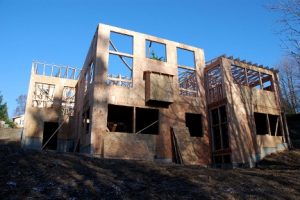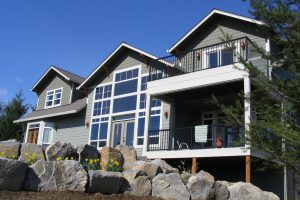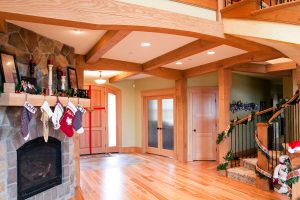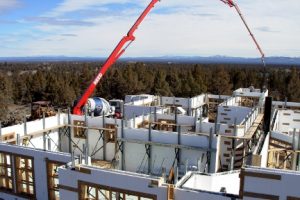Building Envelopes

Advanced Framing
Advanced Framing accomplishes two goals that go hand in hand. First, this method eliminates superfluous wall framing which saves on lumber costs. With the reduction of lumber more insulation can be added which provides long term energy savings. Advanced Framing or O.V.E (Optimal Value Engineering) is most effective when the home is designed specifically with this method in mind. Here is how it works: ...read more

Passive Solar
Five elements function together to successfully create a passive solar home.
Aperture: Windows or “glazing” play an extremely important role in keeping heat in or out of a building. Ideal orientation for solar glazing is within five degrees of true south. This means that the building should be placed in an east-west direction with the majority of glazing facing south. A typical home design will have about twenty five percent southern facing windows which amounts to approximately three percent of the total floor area. A passive solar home increases this to about seven ...read more

Timber Framing
Timber frame construction provides a sense of warmth, longevity, and artistry that surpasses traditional building methods. With structural members crafted from large timbers connected with mortise and tenon joinery, you immediately experience the craftsmanship and simplicity that these homes boast. Whether you seek a traditional, contemporary, or rustic atmosphere, timber frames allow for tremendous design flexibility and individuality ...read more

Insulated Concrete Forms
Insulated Concrete Forms ( or ICF’s) offer many benefits that other building methods do not. ICF’s consist of 2 layers of rigid foam spaced apart by a plastic web. These interlocking, lightweight blocks stack upon one another like Lego blocks forming a hollow wall cavity in which to pour the reinforced concrete. The outer layers of Expanded Polystyrene (EPS) insulate a home in the way a foam coffee cup keeps coffee warm and your hand cool. Consider some reasons why ICF’s may be the right choice for you ...read more


